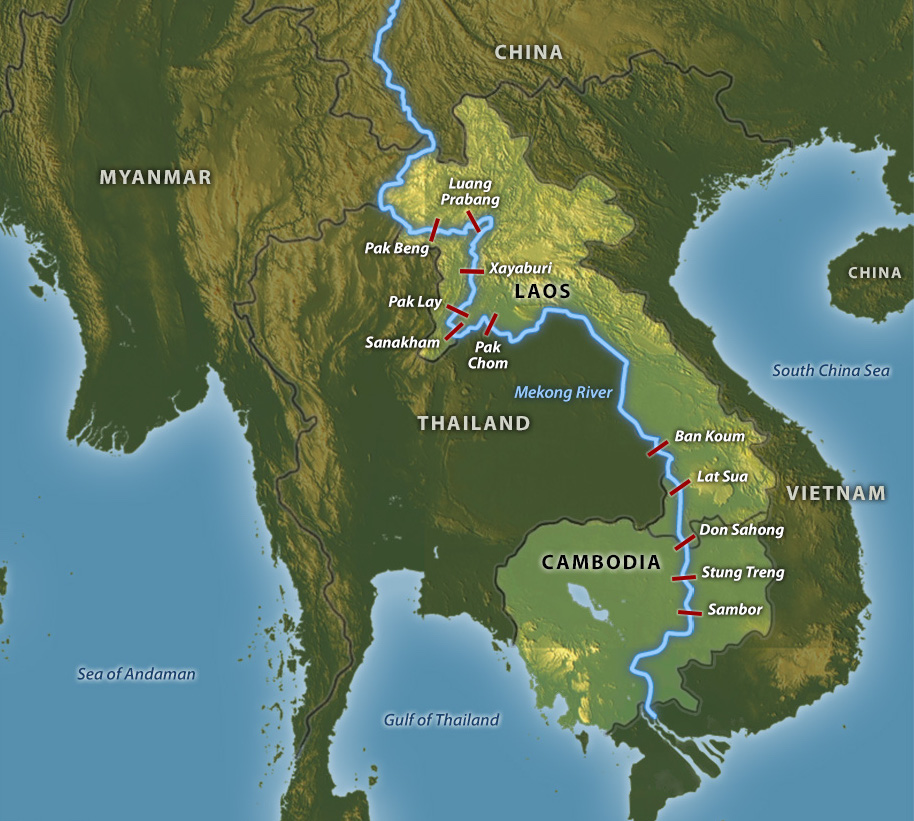THAILAND may lose territory under the plan approved by the Cabinet on Tuesday to improve navigation in the Mekong River between Thailand and the Laos border at Chiang Rai, which will include the dredging of rapids, local people warned yesterday.
The Cabinet agreed in principle with the international Lancang-Mekong River navigation improvement plan from 2015-25, which intends to make the Mekong passable for 500-tonne cargo ships plying the route from China to Luang Prabang in Laos. However, the Cabinet decision was met with heavy protest.
Locals claimed that the adjustment to the river’s course would definitely shift the boundary of Thailand and Laos.
The removal of the rapids will destroy the breeding grounds and habitat of wildlife, which will lead to total devastation of the Mekong River ecosystem.
A joint statement was also released by 20 organisations protesting the Cabinet decision and emphasising that the Cabinet was making a major mistake in allowing the project, which has high risk and serious impact on the people and river ecosystem, to be implemented.
Jirasak Intayot, coordinator of the Rak Chiang Khong Group, raised concerns over the plan, saying that if the government insists on proceeding with the river channel adjustment work, they will have to consider the law seriously or they will end up in ceding the country’s territory and violating the law.
“The river channel improvement will definitely affect the border between Thailand and Laos, because the demolition of rapids would change the river flow and erode the riverbank, changing the border of Thailand and Laos,” he said. The Mekong River forms a part of the Thai-Lao border and changing the river’s course will also change the border, he argued.
The Mekong project was not new. It has been championed for a long time and was not successful until now because the Cabinet was worried about the possibility of territory losses. The project was postponed in 2003.
The joint statement stressed that if this project goes ahead, not only will the motherland be violated and vast swathes of land be lost, the Thai constitution mentions that any project that affects the country’s border must get the approval of Parliament first.
However, this Cabinet resolution has not been deliberated on by Parliament yet, so it may be in conflict with the Constitution.
The project will be implemented on the mainstream of the Mekong, but the agreement was among only four countries, excluding Cambodia and Vietnam, who were also members of the Mekong River Commission (MRC).
That was a violation of the MRC agreement and international regulations on international river management.
“The people’s networks demand that the Thai government end this project immediately to protect our country’s territory and preserve the precious Mekong River ecosystem,” the statement concluded.
Niwat Roikaew, chairman of the Rak Chiang Khong Group, warned that the demolition of rapids in the Mekong would destroy the habitat and spawning grounds for various kinds of native creatures, including the critically endangered Mekong giant catfish. “Not only will this project destroy the rich biodiversity and pristine ecosystem of the river, the ecosystem degradation will also severely hurt many people who depend on the river for food, and destroy their traditional livelihood too,” he said.
The group will send the petition to the government to end this project soon.
According to the Cabinet decision, the plan was part of the Agreement on Commercial Navigation on the Lancang-Mekong River signed by four riparian countries – China, Laos, Myanmar and Thailand – to improve the navigation route on the Mekong and make commercial river transportation convenient, safe and in accordance with the agreement among the country members.
The Cabinet also approved the project to improve the river channel.
The Marine Department will oversee the study, working with other agencies to prevent an impact on the international boundary.
Source: The Nation



